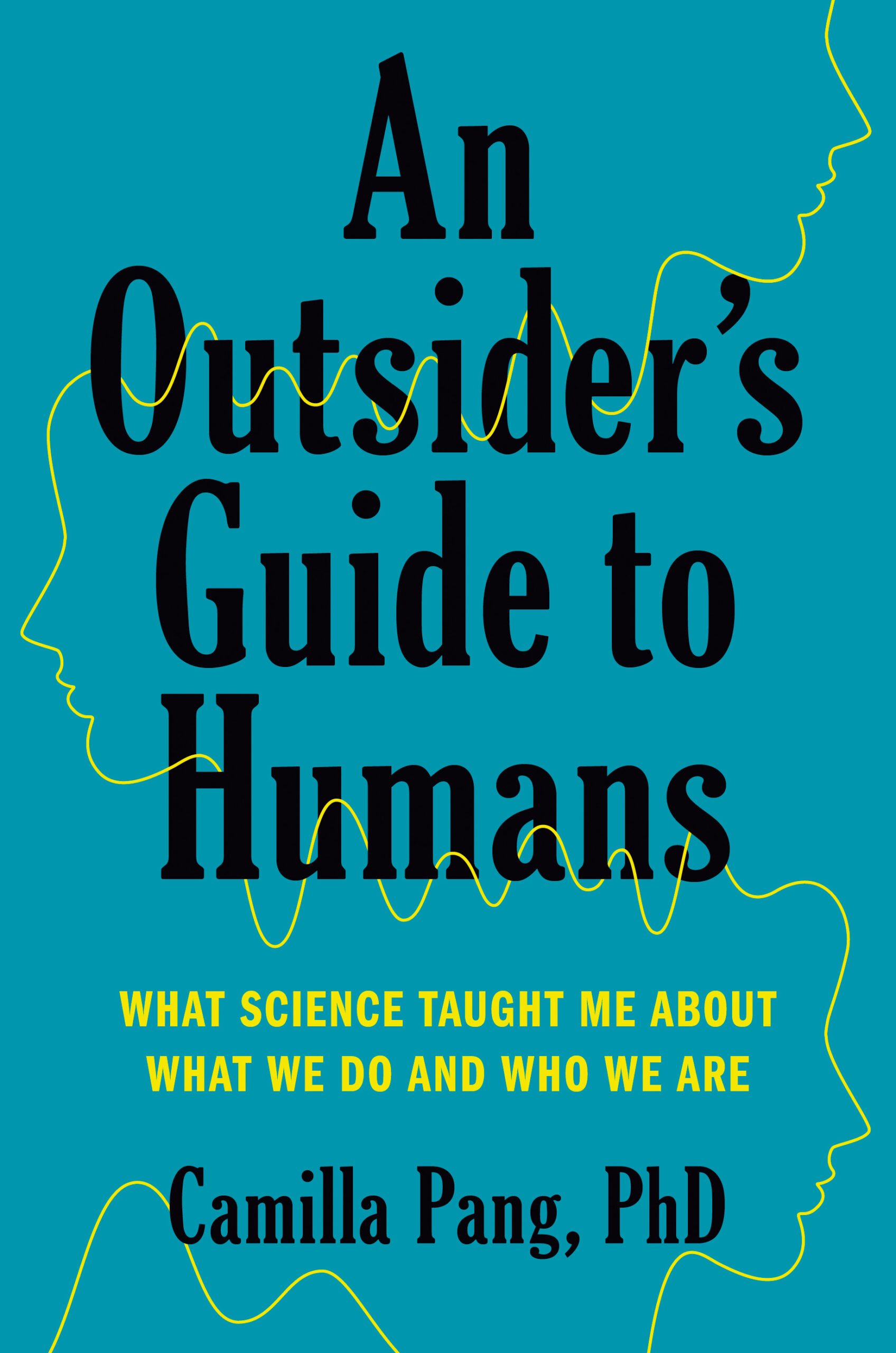When Camilla Pang was five years old, she asked her mother if there were a manual for humans…
Since she was on the autism spectrum, Pang had a hard time figuring out the people around her. “I needed to learn how to react, how to laugh in the right places, how to live among them,” she explains. Her mother said no, there was no such manual — which only inspired Pang. “I had to write my own,” she says. Two decades later, Pang is a postdoctoral scientist living in England, and her book comes out today: An Outsider’s Guide to Humans. Below, I spoke to her about what living with autism feels like.
What does it feel like in your mind? I was riveted by the description in your book about commuting by train across London and how that was such a sensory overload.
There’s a stoicism you have to have in a commute, even though it feels like everything is on a survival instinct. I really react to smells and the social labyrinth. Where do I stand? Is someone going to touch the back of my head? Is that their personal space or mine? A lot of people say, a commute shouldn’t be hard because it’s very normal. But it doesn’t feel normal to me. And I worry that I’ll fail my day before I even can express myself.
You say you feel like an ‘outsider’ around people. Can you talk more about that?
I don’t have a natural instinct of how to act, like other people. I can’t just intuit social norms, like many others can. Instead, I try to systemize how people will act or react. And I take things very literally. Because if I told you about a system that you weren’t familiar with, of course you’d take things literally.
What is an example of something you didn’t understand until you wrote your book?
As I got older, I found socializing really problematic — especially in groups. I never felt like I could naturally wrangle my way into belonging, be it girl talk, small talk, or even talking to adults, since I would speak to everyone the same way. Thankfully, my family members and mentors would explain things to me that were ‘obvious,’ such as how long to hug someone and why people talk in a certain way, which helped a lot.
That sounds like it would be hard in school.
I didn’t understand this concept of ‘cool’ — it was very abstract. But I knew it was something that people valued. I looked in magazines and tried to test whether it was something that people wear, say, or just have, like some magic fairy-dust ingredient. I wanted to be taught these things and do research around what these meant. I found it all particularly hard. So, I would end up staying with the same clothing pattern for a long time, as a safety routine — the same colors, same shape, same hair, and the order in which I would put them on like a spacesuit that would form a protective layer around me.
Why were patterns so important to you?
I would seek patterns everywhere — from the order in which I grabbed different colored pens from my bag, to the shape of a person’s fingernails — to try to reverse engineer and pick apart people’s communication style and how this reflected in how they treated people in making them happy or unhappy. When you’re investigating the world, you want to keep variables routine and constant — your clothes, your hair, the positioning of your chair — so you can change just one variable. And when you change one thing in the middle of an experiment, wouldn’t you have a meltdown?
What do you wish neurotypical people understood about people with autism?
I don’t like when people assume I have no empathy just because I can’t express myself in the same way in conversation. I’ve always wanted to live a life where I could go to university, have a loving partner, have friends that feel like family, and the independence and the autonomy that a job and adulthood promises people.
Why do you think it’s harder for girls, than boys, to be diagnosed with autism?
Ultimately it’s because there’s a kind of masculinization of autism. Diagnoses are biased toward symptoms that boys show — speaking robotically, playing computer games, etc. Also, girls often mask their symptoms.
Did you mask symptoms growing up?
Around age 17, I started to mask it so I would look like I had a normal life from the outside. It felt horrible to suppress myself and I felt tired by just existing. Really, all I wanted to do was play video games 24 hours a day, obsessively read, underline things, listen to music and exist in my own bubble. Today I do still have to mask some of my reactions at work — I just can’t sit at a desk from 9 to 5 without going completely hysterical and having panic attacks. So, I take lunchtime sprint walks and use a standing desk. And my boss understands that I need breaks — come back in five minutes, get a drink of water and we’ll start afresh — and that’s amazing. It didn’t take him reading a book, it took him being a human being.
You’ve said that your neurodiversity is your superpower.
The fact that I’m able to translate between both sides — it’s quite a unique thing for someone on the autism spectrum to do on behalf of others. I do feel like being on the spectrum has been a blessing and enabled me to be true to myself because I can’t be any other thing.
What do you want people to take away from your book?
Hope, in whatever form. I wanted to write this book for my mom so she’d know what was going on and have the transparency I wish I could have given her years back. A lot of parents have said thank you. And of course, I wrote the book for myself and for those who need a manual for people, so others can say, ‘I feel like that! I feel like this!’
Thank you so much, Camilla!
P.S. How to navigate a special needs encounter, and 11 beautiful reader comments on parenting.
(Author photo by Greg Barker.)





